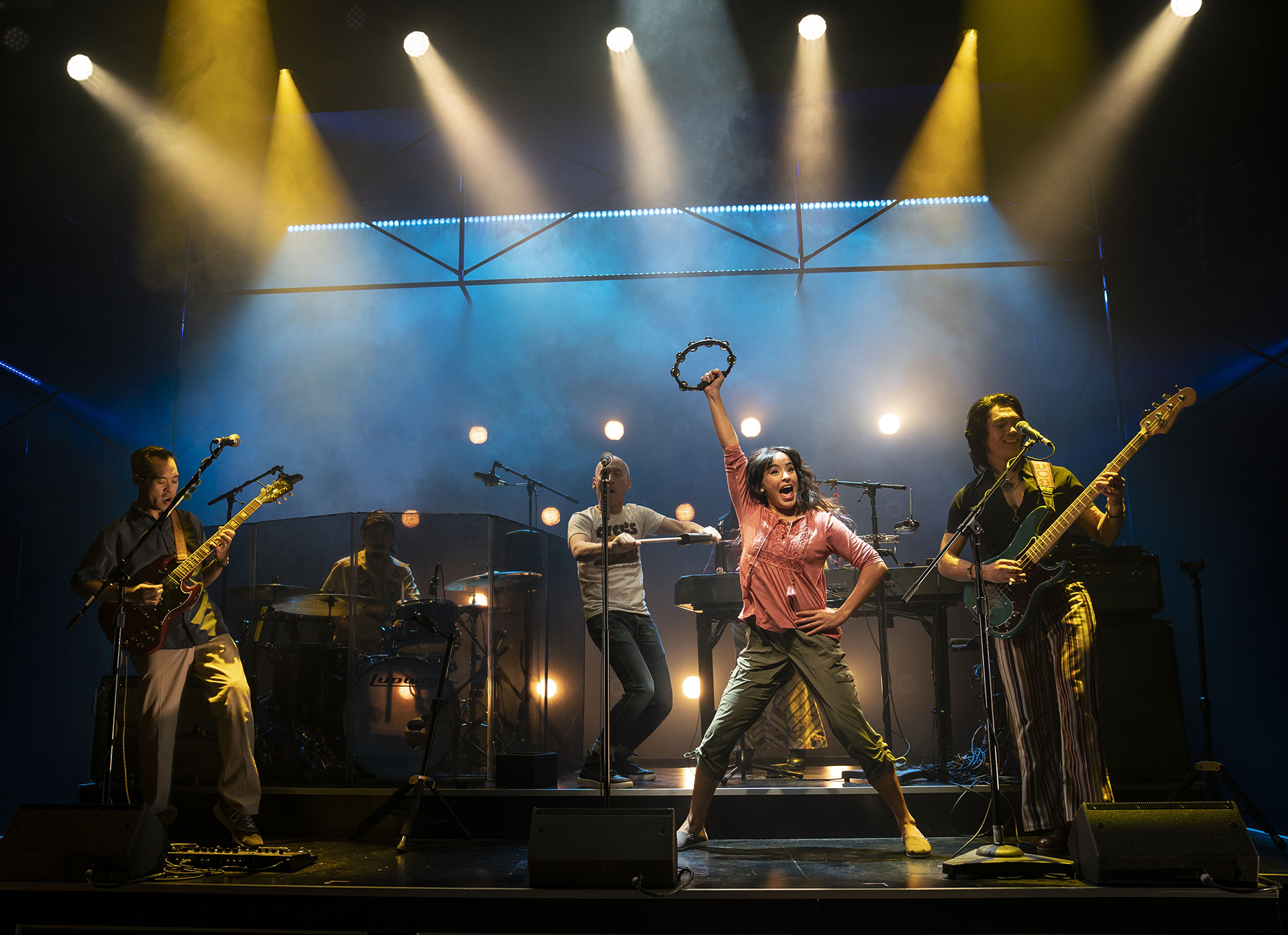Cambodian, Japanese Culture Explored

Lauren Yee’s new musical, “Cambodian Rock Band” at the Signature Theatre, introduces a style of popular music that emerged around the country’s capital, Phnom Penh, in the 1960s and ‘70s. A mix of traditional Cambodian music with the jukebox songs American soldiers introduced to Vietnam, along with influences from Europe and Latin America, it defined a flourishing musical movement.
A fusion of electric guitars, drums, and Cambodian lyrics, the music expresses sharp dissonance. In this production, songs written by the Los Angeles-based Cambodian band Dengue Fever are performed live. Here the musical style blends more easily with an American ear. Along with songs in Cambodian, the production includes popular American tunes like Bob Dylan’s “The Times They Are A-Changin’.”
As we know, the music that proliferated then came to an abrupt halt in 1975 when the Khmer Rouge put a stop to it and just about every other form of personal expression. In fact, many musicians were among the two million victims killed by Pol Pot’s regime.
Interestingly, the story here is told by the daughter of a survivor of the Cambodian genocide. Born and bred in Seattle, Neary (Courtney Reed) is a strong-willed young woman working for an NGO in Phnom Penh. Her official mission is to bring the Khmer Rouge to justice. Part superwoman, but mostly her father’s daughter, her research leads us on the trail to the Khmer Rouge in present-day Cambodia and her family’s past.
On her trail is her equally persistent father, an American immigrant Chum played by Joe Ngo. We meet him in 2008 visiting his daughter and travel back to his youth (1975) as a musician in the onstage rock band. The story telling that weaves all of these narratives together into one beautiful outcome is obviously sentimental. But as directed by Chay Yew, it’s tightly woven, expressing the urgency of survival.
Particularly well cast as Chum, Ngo has a rubbery physicality, morphing his slender frame from a cartoon etching that bends and sways, to a victim jolted by electronic shock, to an aging dad trying to hold on to his only child.
In addition, Reed portrays the singer in the rock band her father played in as a youth. Her voice is soft, sultry, and subtly sexy.
Better known to Broadway audiences, Francis Jue (“Madame Butterfly,” “Thoroughly Modern Millie,” etc.) portrays the dreaded head of the cruelest and most dangerous camp of the Khmer Rouge. He also narrates the story with an omnipresence that turns from clownish to outright evil.
It’s fun to cheer for the good guys.
Suicide Forest
The surrealism that abounds in Haruna Lee’s work, “Suicide Forest,” seems hermetic, obtuse, and off-putting for much of the play’s 90 minutes. Confounded by the fact that the play is in Japanese and English, the audience may find better clues in the pink striped wallpaper that contrasts with a glowing blue picture of Mount Fuji than in the dialogue. Jian Jung’s scenic design is a Pandora’s Box of imagery.
Or perhaps one is better dwelling on the bizarre costumes by Alice Tavener. The most outré — worn by two women portraying themselves as kids with peppermint-striped hair — are poufy pink dresses, platform sneakers, and white lace gloves.
The two daughters of a suicidal Salaryman (Eddy Toru Ohno), played by Akiko Aizawa and Dawn Akemi Sasito, act like slaves to a giddy sensibility. They’re definitely coy, obsessed with femininity, and submissive to the point of perversity. In their own way, they’re stereotypes of teenagers.
Later, after a journey into the forest where people are known to commit suicide, the actors drop their characters and become themselves. At this point, the playwright’s commentary becomes more reflective and revelatory. It addresses the barriers of language and culture that are obviously defining of the Japanese-American immigrant experience.
When Haruni describes masturbating to a sex scene in the movie “Boys Don’t Cry” while noticing her father’s ashes on the bookshelf, she’s describing a primal coming of age experience. And one that takes place at the crossroads of juxtaposing cultures.
At its best, Lee’s writing is sensitive and lyrical. She explains, “within the divided parts of myself — Japanese, American, Taiwanese — I’ve always felt a phantom pain.” It’s that pain which she asks her mother (Aoi Lee), a Butoh dancer, how to face. Is it “demon, or ghost, or god?”
More performance art than structured play, “Suicide Forest” evokes a completely different kind of theatrical vision. Still, it delves into the most elementary questions of identity: where we come from, what created us, and where we can go from there.



